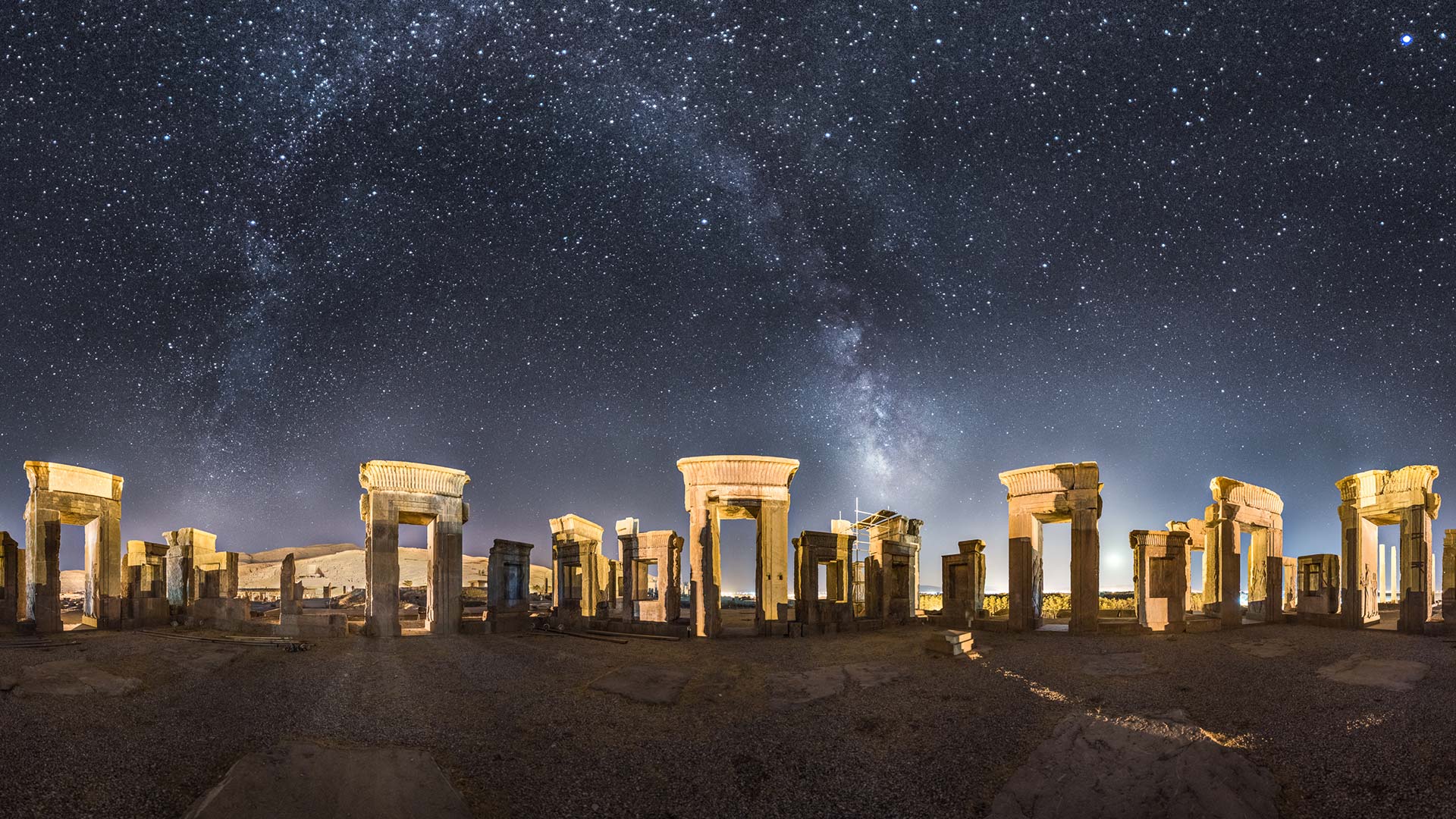A devout people, the Persians designed and built many magnificent cities. In the history of the Middle East, their Achaemenid Empire was the first to unite the entire region into an organized State.
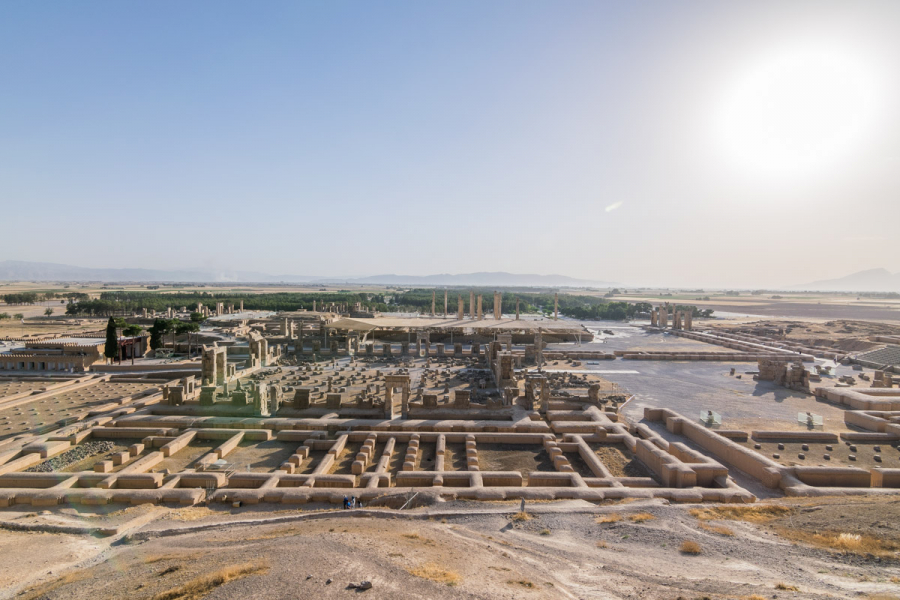
Ancient Persepolis was splendid with its palaces, mansions, and magnificent halls.
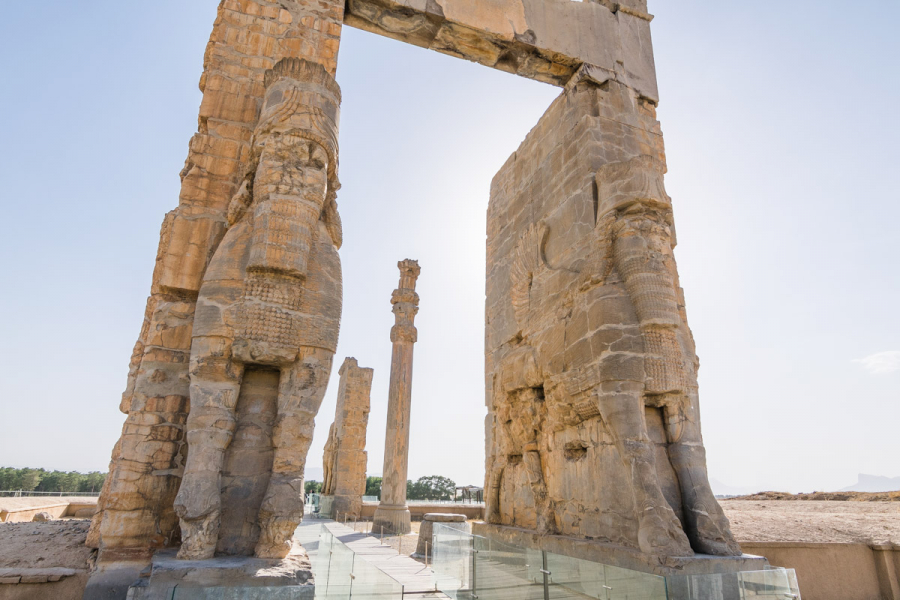
Gate to Persepolis
During the Achaemenid period, Persepolis (ancient Persia) was the ceremonial capital of the entire early Persian Empire. Persepolis is located about 70 km northeast of the modern city of Shiraz in the Fars province of present-day Iran.
The most splendid architecture in the Persepolis complex is the Apadana Palace, a masterpiece, a symbol of the soul and thought of Persia but at an international level in architecture and art. Artisans from all over have contributed Greek-style white stone columns, Roman-style temples, Persian-style stone reliefs, mixed with Syrian, Turkish, and Egyptian colors. The Apadana Palace is also where Persian kings held meetings and welcomed ambassadors from other countries.

Persepolis is an architectural masterpiece with intricately carved stone columns.
Persepolis was not only a building serving the royal dynasty at that time, but also an architectural masterpiece, expressed through the exquisitely carved stone columns, vividly sculpted walls... displaying the talent of ancient Persian craftsmen.
Persepolis is also a symbol of the wealth of the Persian Empire because of its grand architecture, lavish works with gold and silver and beautiful sculptures.


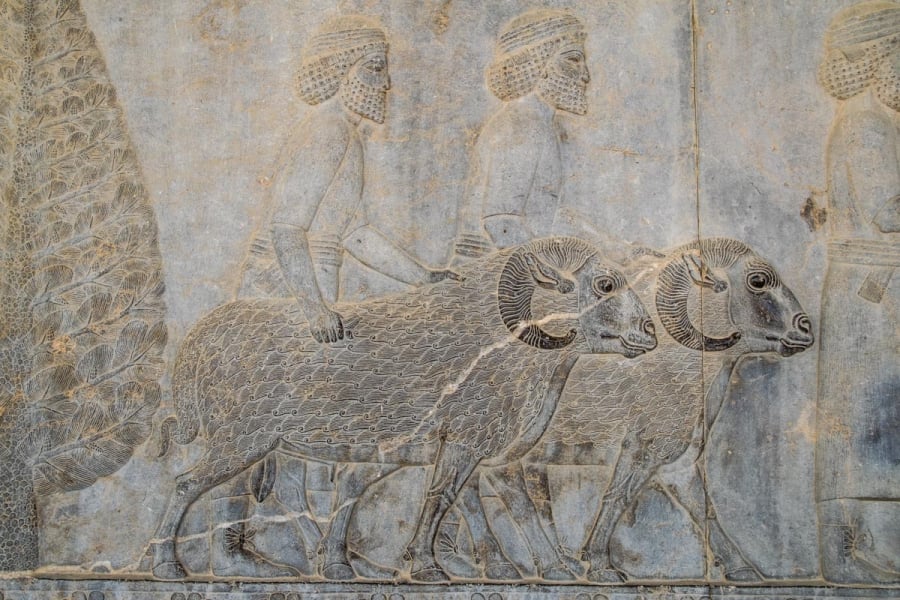

Vivid reliefs at Persepolis
In 320 BC, Alexander the Great from Macedonia, after conquering Greece, attacked Persia. He came to Persepolis, where his troops rested for two months. The place that used to be the place to celebrate the spring festival of Noruz and receive ambassadors from all over the world, now became a resting place for the notorious soldiers from all over the world. Wine flowed freely during those two months. Until one day, Alexander the Great seemed to remember that a century and a half earlier, the Persian emperor Xerxes had attacked Greece and burned Athens to the ground. Wine was spilled and fire broke out. It is believed that Alexander the Great deliberately burned Persepolis to avenge Athens.
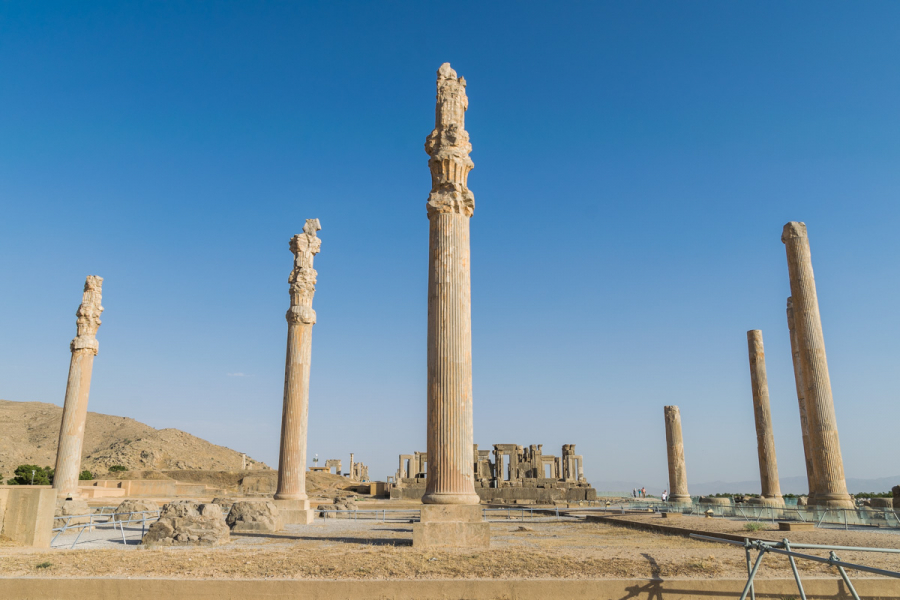
Excavations of the site in the 1930s revealed that fire had consumed the stone pillars of the Apadana Palace, burned the 100 marble pillars of the Hundred Pillars Palace, and melted the iron and lead beams. The palace dome collapsed.
Before the city of Persepolis was burned, Alexander the Great plundered all the treasures in the city's treasury, loaded them onto three thousand camels, and transported them to Macedonia. He also had all the gold plating removed from the stone pillars, the reliefs on the walls, and the stairs. Persia at that time was famous for its abundance of gold, silver, and jewels, and was one of the richest countries.
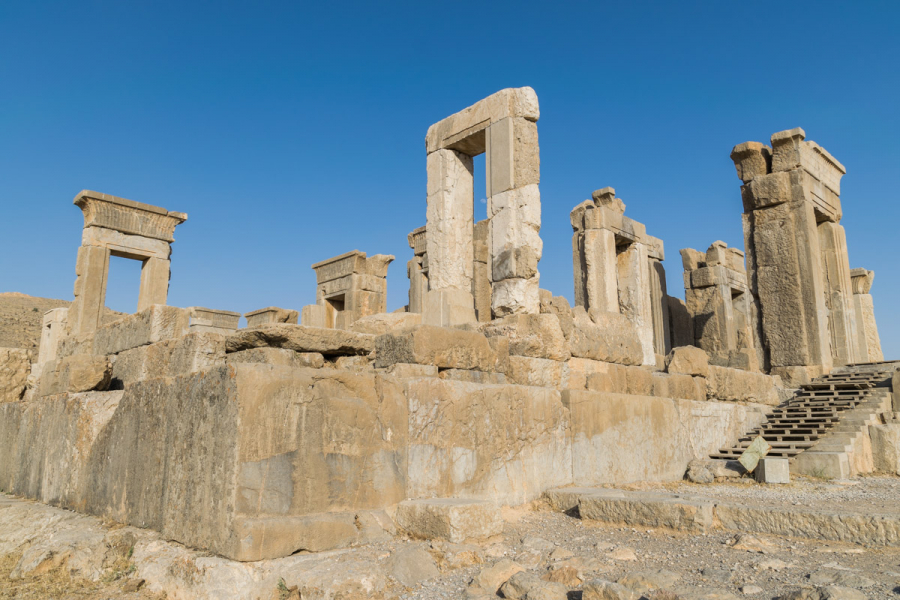
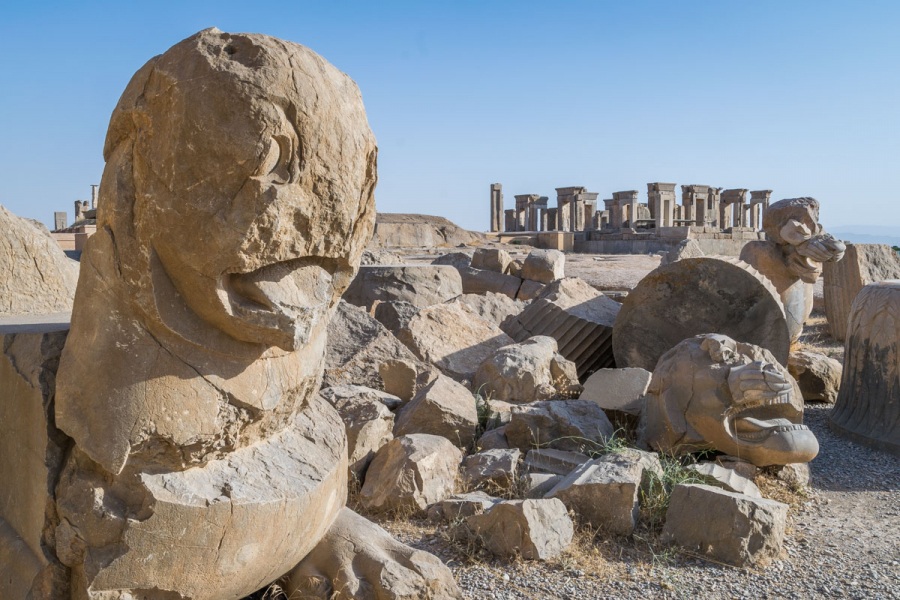

The palace once had 100 stone columns, now only marble pedestals remain, with scattered pieces of the once towering columns. At the Gate of All Nations, there are still three stone columns nearly 20 meters high, on top of which were statues of animals with bird heads and lion bodies. Nearby are gracefully winged cows flying up…
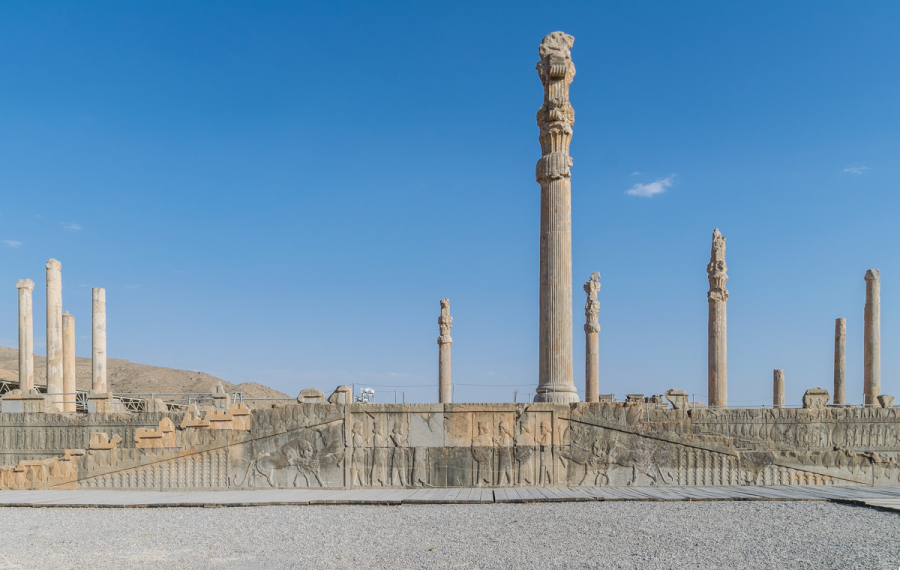
The palace once had 100 stone columns, now only marble pedestals remain.
About 12 km northwest of Persepolis is Naqsh-e Rustam, an ancient tomb of Persian kings, located on a rocky hill.
The main attraction of this destination is the huge relief panels that decorate the front of the temple, dedicated to the kings of the Achaemenid dynasty. Some of the reliefs are damaged, the oldest of which depicts a man with an unusual head, which is believed to be the origin of human writing.

Naqsh-e Rustam was considered a sacred mountain range during the Elamite period, the period when human writing first developed. The mountain frontage served as a mausoleum for Achaemenid kings and their families in the 5th and 4th centuries BC and was also the site of many important communal ceremonies.
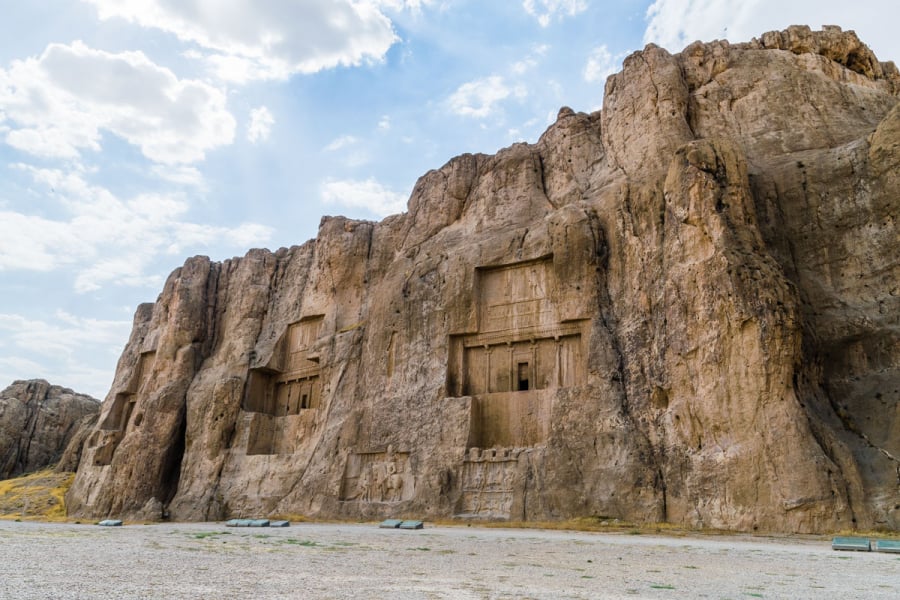
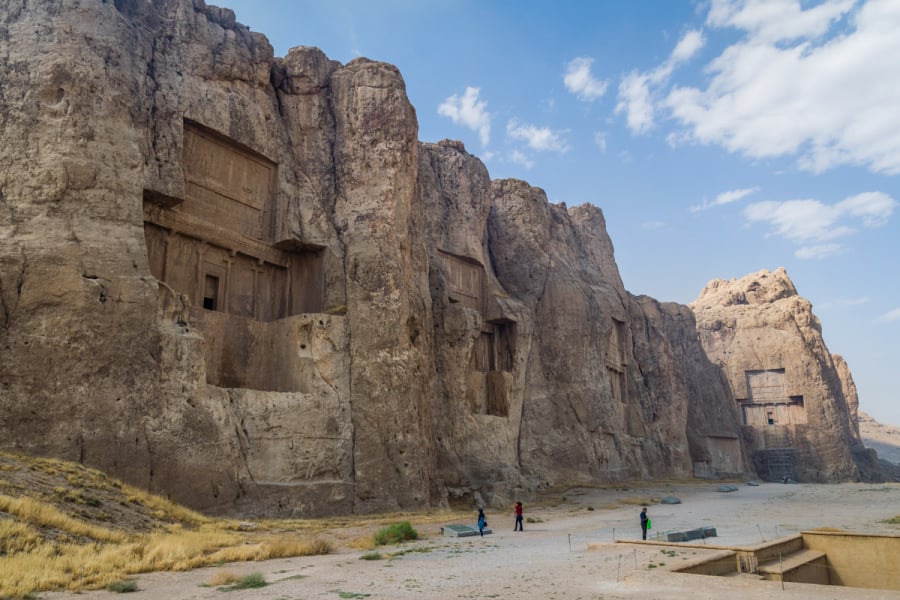

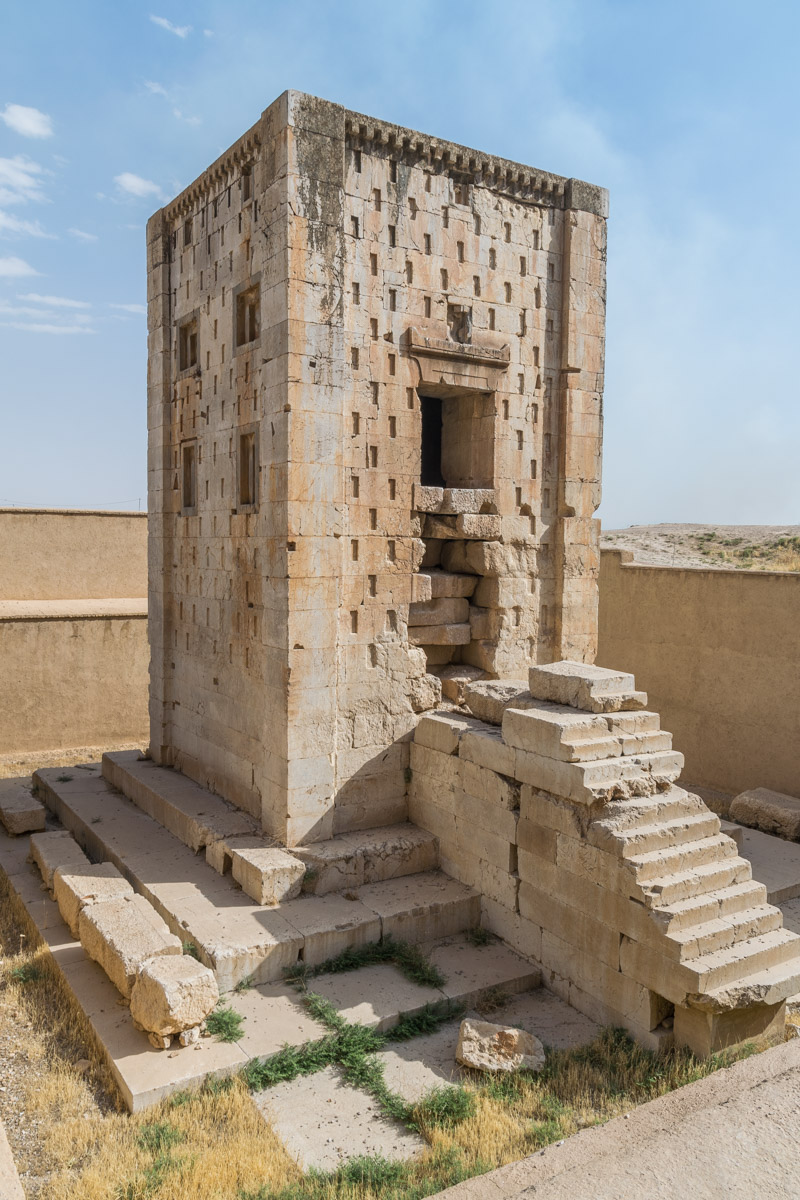
The entrance to each tomb opens into a small chamber where the king's coffin is located.
The complex includes several smaller tombs of the kings of the BC period: Darius I the Great (522-486), Xerxes I (486-465), Artaxerxes I (465-424), Darius II (423-404). The unfinished tomb may be that of Artaxerxes III, the longest reigning (2 years), but it may also be that of Darius III (336-330), the last king of the Achaemenid dynasty.
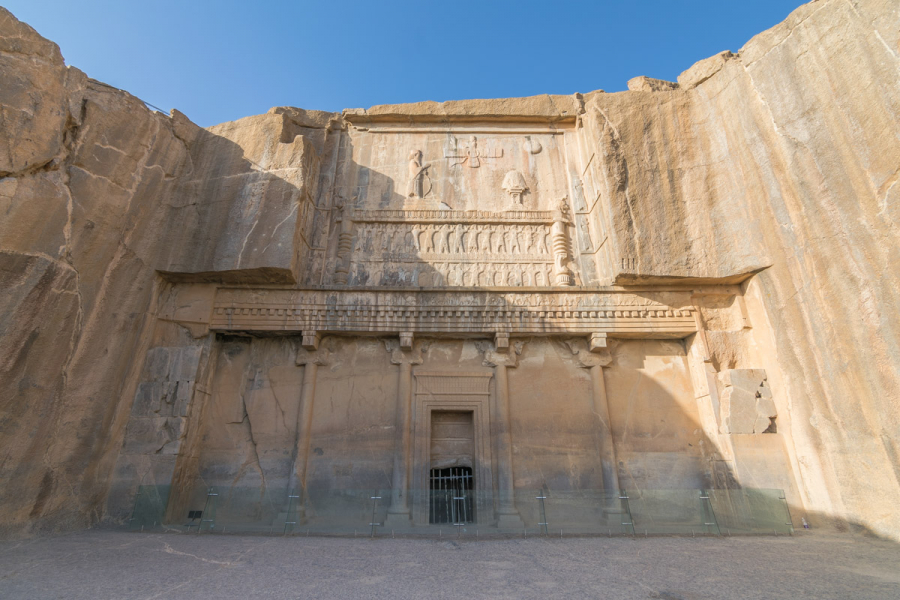
Tomb of Artaxerxes III

Tomb of Artaxerxes II
To this day, time and war have destroyed most of the ancient Persian monuments, but those cultural and architectural values still exist in Persepolis and the Naqsh-e Rustam tomb, as a great testament to the prosperity of the first Persian Empire. Persepolis was recognized by UNESCO as a World Heritage Site in 1979.
Today, the Persepolis ruins are one of Iran's most popular year-round tourist destinations. Every year, Persepolis hosts sacrificial ceremonies and community festivals.






